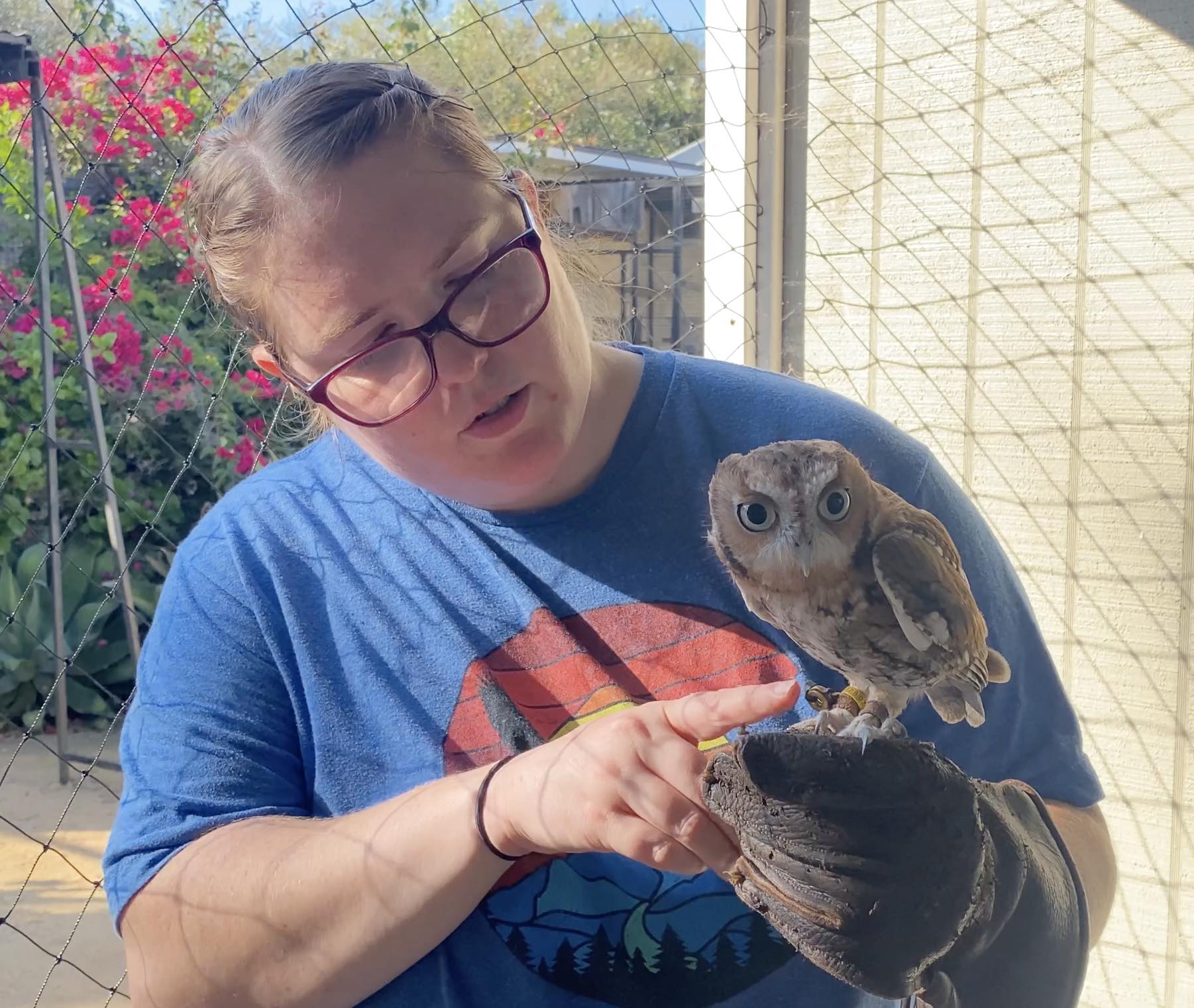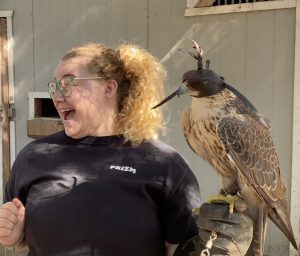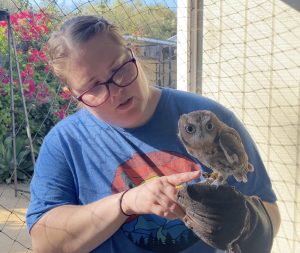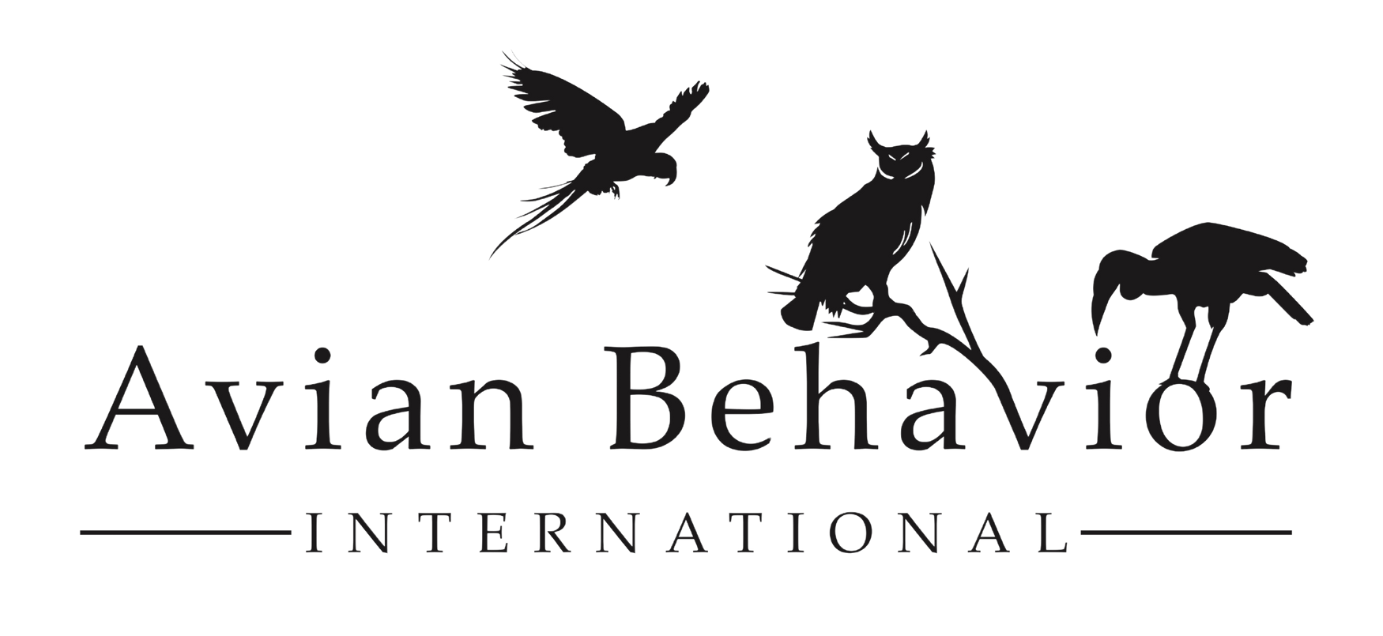
17 Oct Unlocking Avian Potential: A Deep Dive into Bird Training and Problem Solving with ABI Workshops
What would you do with four to five hours each day to train your birds and problem solve? This is the question our workshop guests get to answer, and answer, they did! After ten years of hosting workshops and clinics on the Avian Behavior Ranch, we love that each experience brings fresh ideas and problem solving challenges. And for us as teachers, there are still topics that fire us up and bring forth robust and lively discussion.
A sold out ABI workshop is still small and offers a lot of latitude to explore different ideas and discuss the science and the process with your training guide and your group. Over the years, we have reduced the size of our workshops. We found these discussions to be one of the most helpful spaces in the experience, where people felt safe to open up about a topic discussed, and we could easily broaden our understanding of that idea by finding another bird to train to help us scope out those concepts.
This fall, we had trainers and educators both from the zoo and the wildlife rehabilitation and education space, offering a lovely opportunity with some of our newer bird of prey residents, including the thirty year old king vulture, the confiscated great horned owl, and the young eastern screech owl. One of the bi ggest concepts that we were all able to hone in on here was that progress is not always linear, and we have to take into account a) what our definition of success, which may not be or look the same as others’ b) the metrics we will use to measure that success c) and the different limiting factors that we face. For us, we know that a rigid and hierarchical system of principles often belies the way an individual responds to environmental conditions. We want to ensure that we are putting that bird’s needs in perspective. Therefore, the framework we work from is using effective, efficient, and optimal. (Heidenreich, B., Farhoody, P., Hetts, S., Madere, S., Estep, D., Pedersen, A., Feuerbacher, E., Fernandez, E. (2021). Behaviour Intervention Guidelines www.BigForAnimals.com)
ggest concepts that we were all able to hone in on here was that progress is not always linear, and we have to take into account a) what our definition of success, which may not be or look the same as others’ b) the metrics we will use to measure that success c) and the different limiting factors that we face. For us, we know that a rigid and hierarchical system of principles often belies the way an individual responds to environmental conditions. We want to ensure that we are putting that bird’s needs in perspective. Therefore, the framework we work from is using effective, efficient, and optimal. (Heidenreich, B., Farhoody, P., Hetts, S., Madere, S., Estep, D., Pedersen, A., Feuerbacher, E., Fernandez, E. (2021). Behaviour Intervention Guidelines www.BigForAnimals.com)
Everyone faces some form of limitation and deadline or another, even a redtail sitting on a utility pole in a field. We all have to achieve something by a certain time. Sometimes the process doesn’t look the way we want it to every step of the way, but our bird is still taking in valuable information.
This ties into our second key concept of workshop week, and that is building skills. Skill building means that our bird has a host of beneficial behaviors that help us establish clear cues between one another. These support larger, more complex behaviors. For example the king vulture may know how to crate voluntarily, but once we take her into a new, bigger space, we need a host of microskills to teach her how to move even in a simple point to point track and back in order for her to crate back successfully without grabbing at someone. By training the foundation of those skills as much as we can in her home space, we might still have a little more work in a new environment, but she has the basics in place and we don’t then have to rely on pure food motivation to take the place of skill fluency.
Fall workshop guests had incredible success with corvid force free veterinary behaviors, they practiced the mechanics of hooding as well as the context when it would be a good tool, they stepped up a free lofted  equipment free owl who was just learning, they practiced non-coercive negative reinforcement. Guests showed amazing work across their visit with problem solving behaviors such as teaching a go away with both a vulture and a crowned crane, and put in tiny micro equipment in our smallest owls. We learned how feeding mechanics based on your raptor’s ethology can change your whole universe.
equipment free owl who was just learning, they practiced non-coercive negative reinforcement. Guests showed amazing work across their visit with problem solving behaviors such as teaching a go away with both a vulture and a crowned crane, and put in tiny micro equipment in our smallest owls. We learned how feeding mechanics based on your raptor’s ethology can change your whole universe.
As our guests consistently remark, learning and practicing these concepts with guidance to take back to your birds can make virtually an instant difference. We can take animals that haven’t been able to be successful on programs and get them program ready by setting up a stepwise plan in order to meet our goals. As our guests put it, birds that are at 60, 70, and 80% can now achieve their 95-99%. Those are successes everyone can be proud of!

